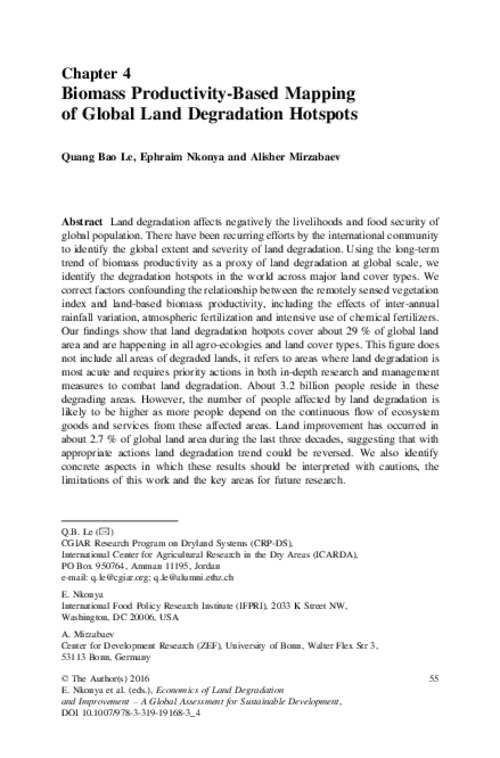Resource information
Land degradation affects negatively the livelihoods and food security of
global population. There have been recurring efforts by the international community
to identify the global extent and severity of land degradation. Using the long-term
trend of biomass productivity as a proxy of land degradation at global scale, we
identify the degradation hotspots in the world across major land cover types. We
correct factors confounding the relationship between the remotely sensed vegetation
index and land-based biomass productivity, including the effects of inter-annual
rainfall variation, atmospheric fertilization and intensive use of chemical fertilizers.
Our findings show that land degradation hotpots cover about 29 % of global land
area and are happening in all agro-ecologies and land cover types. This figure does
not include all areas of degraded lands, it refers to areas where land degradation is
most acute and requires priority actions in both in-depth research and management
measures to combat land degradation. About 3.2 billion people reside in these
degrading areas. However, the number of people affected by land degradation is
likely to be higher as more people depend on the continuous flow of ecosystem
goods and services from these affected areas. Land improvement has occurred in
about 2.7 % of global land area during the last three decades, suggesting that with
appropriate actions land degradation trend could be reversed. We also identify
concrete aspects in which these results should be interpreted with cautions, the
limitations of this work and the key areas for future research.


